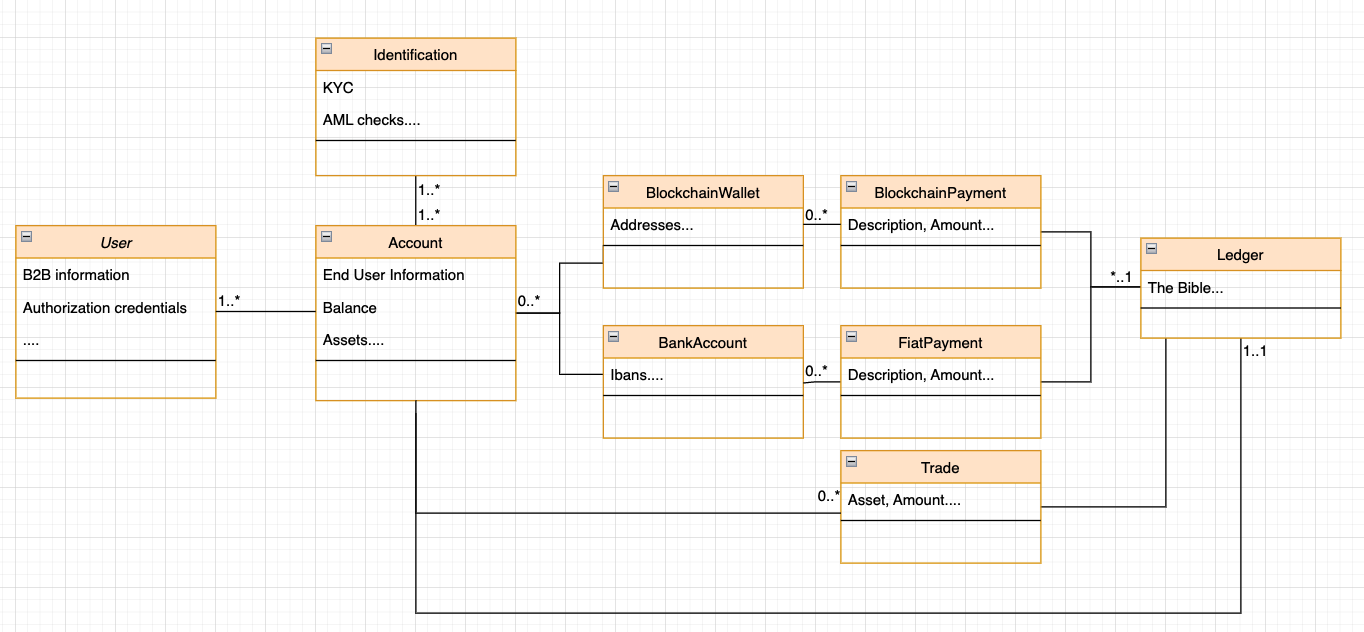Before starting implementing the APIs it has sense to review how you will manage the different resources.
As the implementer, you'll assume the role of a User from our perspective. This role involves managing various elements such as Authentication/Authorization keys, ACL configurations, and more.
The APIs provide you with the capacity to open accounts for your end-users (if applicable). These accounts maintain a many-to-many relationship with Identifications.
- You can have a single business account, to manage your own operations or many, to support multiple treasury tables.
- You can have end users, with their own Identification having single/multiple accounts themselves for trading, treasury, etc....
- You can have family accounts, where a single account is owned by multiple people.
The design and configuration depend entirely on your specific business requirements.
Each account can host numerous entities, ranging from bank accounts to wallets, invoices, trades, and others. Every transaction is meticulously recorded in a central Ledger for systematic tracking and management.

If you have any doubt or feedback in how this evolves, feel free to reach out 🙂
